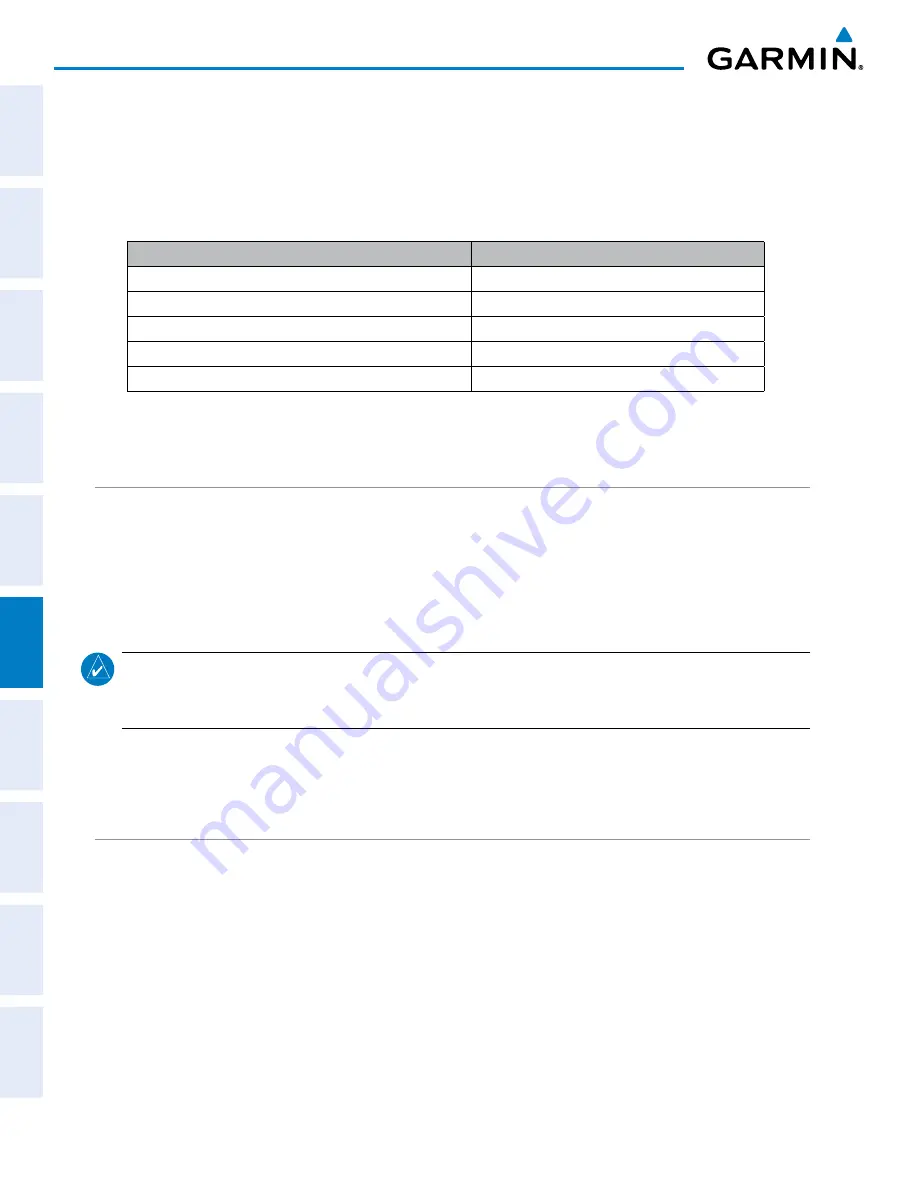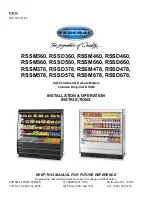
Pilot’s Guide for the Cirrus SR2x with Cirrus Perspective by Garmin
190-00820-11 Rev. A
480
HAZARD AVOIDANCE
SY
STEM
O
VER
VIEW
FLIGHT
INSTRUMENTS
EIS
AUDIO P
ANEL
& CNS
FLIGHT
MANA
GEMENT
HAZARD
AV
OID
ANCE
AFCS
ADDITIONAL FEA
TURES
APPENDICES
INDEX
The ground station provides ATC radar information for other aircraft within ±3,500 feet and 15 NM of the
participant, to include altitude, position, ground speed, and ground track. TIS-B broadcasts occur once every
three to thirteen seconds, depending on the characteristics of the ground station providing the TIS-B service.
The following table describes the aircraft that are observed by a GDL 88-equipped aircraft according to the
level of equipment installed in the other aircraft.
Other Aircraft Equipment
Viewable by GDL 88 UAT Equipped Aircraft
1090ES Out Equipped
Yes
UAT Receive Only Capable
No
UAT Transmit Equipped
Yes
No Transponder, No ADS-B
No
Non ADS-B Equipped, but with Mode C or S Transponder
Yes*
*
Only when in ADS-B ground station coverage and when the other aircraft is in ATC radar coverage.
Table 6-42 Aircraft Available for Viewing by an ADS-B Equipped Own Aircraft
ADS-B WITH TAS
When an optional Traffic Advisory System (TAS) is also installed and operating with the UAT, the UAT
receives traffic from the active traffic system and attempts to match (or “correlate”) this traffic with ADS-B
traffic the UAT is tracking. When a correlation is made, only the traffic with the most accurate information
is displayed to the flight crew. Any traffic that is not correlated (i.e., only detected by one system but not the
other) is also displayed for the flight crew. This correlation of traffic by the UAT improves the accuracy of the
traffic displayed, while reducing the occurrence of the same aircraft being displayed twice.
NOTE:
When operating on the edges of ATC radar coverage or when using an optional active traffic system
providing intromittent traffic data, a single aircraft may be briefly or periodically depicted as two aircraft on
the display.
Either the TAS or the UAT can issue a traffic alert. If both systems determine an alert is necessary, and
the traffic is correlated, only the TAS-generated alert is issued. If traffic is not correlated, and both systems
determine an alert is necessary, the TAS-generated alert occurs first, followed by the UAT-generated alert.
CONFLICT SITUATIONAL AWARENESS & ALERTING
Conflict Situational Awareness (CSA) is an alerting algorithm which provides ADS-B traffic alerting similar to
the TAS systems discussed previously.
The UAT issues a voice alert when a Traffic Advisory (TA) is displayed, for example “Traffic! Two O’clock,
Low, Two Miles.”
The own aircraft altitude above terrain determines the sensitivity of the CSA algorithm to minimize nuisance
alerts. Radar Altitude (if available), Height Above Terrain, and Geodetic Sea Level (GSL) altitude are used to
adjust the sensitivity of the CSA algorithm in accordance with the following table:





































